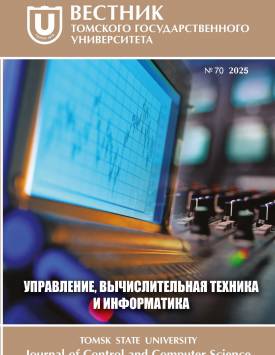Neural network testing of a data labeling algorithm for classifying support and resistance levels in financial markets
An algorithm for labeling data is presented to train a classifier capable of identifying support and resistance levels in financial market data. Using data obtained from this algorithm, a CNN-LSTM-MLP model was trained, incorporating causal convolutions, LSTM, and fully connected layers. An experiment with a simple trading strategy demonstrated the practical applicability of the model, accompanied by a 10% increase in profitability compared to a basic strategy where the model was not used. Contribution of the authors: the authors contributed equally to this article. The authors declare no conflicts of interests.
Keywords
market quote data,
deep learning,
causal convolution,
support levels,
resistance levelsAuthors
| Khairov Mark A. | Tomsk Polytechnic University | mah9@tpu.ru |
| Spitsyn Vladimir G. | Tomsk Polytechnic University; Tomsk State University | spvg@tpu.ru |
Всего: 2
References
Osier C. L. Support for resistance: technical analysis and intraday exchange rates // Economic Policy Review. 2000. V. 6 (2). Р. 53-68.
Garzarelli F. et al. Memory effects in stock price dynamics: evidences of technical trading // Scientific Reports. 2014. V. 4 (1). Art. 4487.
Chung K., Bellotti A. Evidence and Behaviour of Support and Resistance Levels in Financial Time Series // arXiv preprint. 2021. URL: https://arxiv.org/abs/2101.07410 (accessed: 05.12.2024).
Sirignano J., Cont R. Universal features of price formation in financial markets: perspectives from deep learning // Quantitative Finance. 2019. V. 19 (9). P. 1449-1459.
Zhang Z., Zohren S., Roberts S. Deeplob: Deep convolutional neural networks for limit order books // IEEE Transactions on Signal Processing. 2019. V. 67 (11). P. 3001-3012.
Szegedy C. et al. Going deeper with convolutions // Proc. of the IEEE Conference on Computer Vision and Pattern Recognition. 2015. P. 1-9.
Tsantekidis A. et al. Using deep learning for price prediction by exploiting stationary limit order book features // Applied Soft Computing. 2020. V. 93. Art. 106401.
Ntakaris A. et al. Mid-price prediction based on machine learning methods with technical and quantitative indicators // PloS One. 2020. V. 15 (6). e0234107.
Ntakaris A. et al. Feature engineering for mid-price prediction with deep learning // IEEE Access. 2019. V. 7. P. 82390-82412.
LeCun Y. et al. Gradient-based learning applied to document recognition // Proc. of the IEEE. 1998. V. 86 (11). P. 2278-2324.
Wallbridge J. Transformers for limit order books // arXiv preprint. 2020. URL: https://arxiv.org/abs/2003.00130 (accessed: 05.12.2024).
Van Den Oord A., Dieleman S., Zen H., Simonyan K., Vinyals O., Graves A., Kalchbrenner N., Senior A., Kavukcuoglu K., Wavenet: A generative model for raw audio // arXiv preprint. 2020. URL: https://arxiv.org/abs/1609.03499 (accessed: 05.12.2024).
Daily Treasury Bill Rates // U.S. Department of the Treasury. URL: https://home.treasury.gov/resource-center/data-chart-center/interest-rates/TextView?type=daily_treasury_bill_rates&field_tdr_date_value=2023 (accessed: 05.12.2024).
Maverick J.B. What the Sharpe Ratio Means for Investors // Investopedia. URL: https://www.investopedia.com/ask/answers/010815/what-good-sharpe-ratio.asp (accessed: 05.12.2024).

